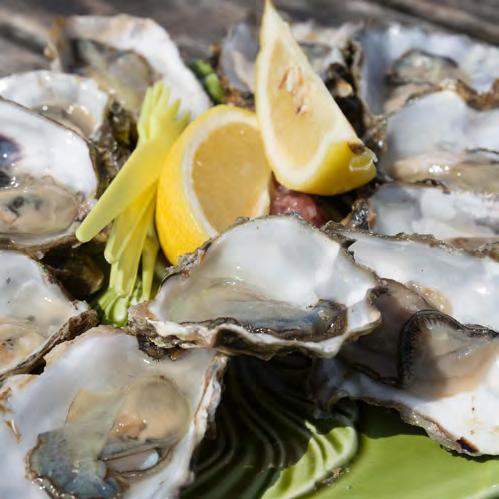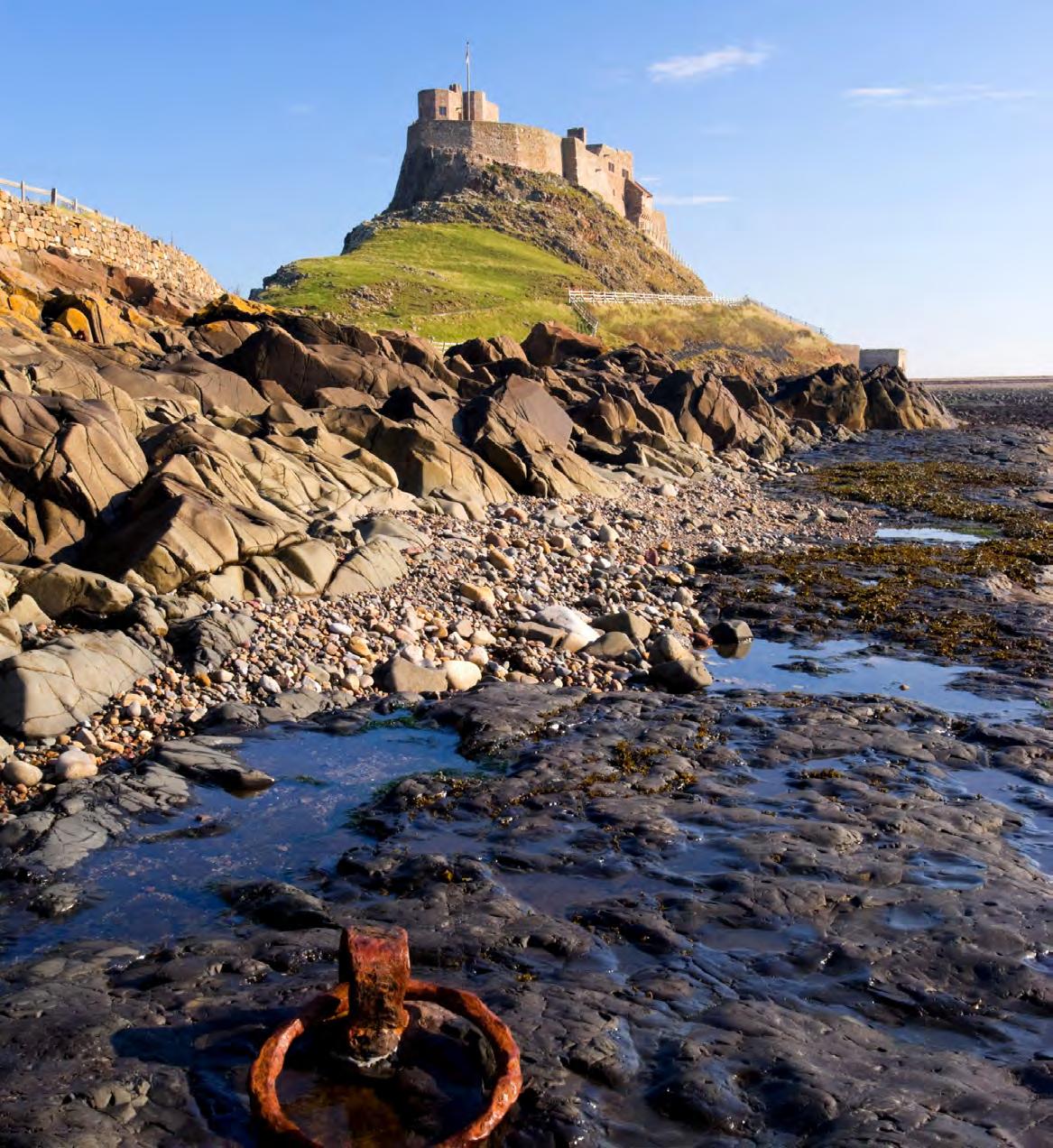
7 minute read
Food of love: Why
from SO Magazine May 2021
by One Media

With lockdown slowly being lifted, it’s finally time for loved up couples to start planning their big day. Lottie Bulmer chats to Dan Yardley, Head Chef at popular wedding venue Salomons Estate, about how he and his team can serve up a safe and perfect day to remember…
Advertisement
What’s the current marriage market like for you at Salomons? People are obviously wanting to get married after waiting for so long since the first lockdown last March. And although we have hosted a number of weddings, in accordance with the current guidelines I think most are hanging on until June 21 because that’s the day when everyone can have a proper party!
What have been the challenges since the limitations were put on weddings? Well shared buffets are obviously no longer possible because of Covid. And now canapes, traditionally served with drinks on arrival, have to be served in a Covid safe manner. It will be interesting to see if people still opt to have food in the evening – a time when usually more guests arrive and people are hungry. I’m guessing it will all depend on peoples’ attitudes around Covid whether they opt for a buffet. It will be interesting to see what happens next month as lockdown measures are eased further.

You have been Head Chef for 15 years and done countless weddings. How do you ensure each one is bespoke? Every couple has a meeting with the Sales & Events team here, and they choose what they’d like to try. Then they come back and have a tasting session with us. This is my first involvement in the process and gives me the chance to chat through a couple’s likes and dislikes. Unlike a lot of venues, the wedding menu here is never set in stone; it’s a guide and we try our best to fulfil what guests would like. We are also flexible too: if we have enough time to plan and can even do different cuisine styles such as Caribbean and Indian dishes. DID YOU KNOW? The Salomons Estate in Tunbridge Wells now has over 70 weddings booked until January 2022. Do you have a must-have dish for a wedding menu? Not really. I love cooking and trying new and different things. I have been here for 15 years so I like to keep challenging myself! I’m particularly inspired by things I’ve seen on the TV like the Great British Menu – I’m always trying to improve and better myself with my cooking. How has the overall Covid situation impacted on weddings in general at Salomons? We’ve had much smaller ones, for obvious reasons. Last month we had one where the bride and groom opted for a five-course taster menu. They had to change their approach as they couldn’t have as many guests as usual and so decided to give more of an emphasis on the food. I guess having five courses instead of the usual three fills the gaps where you’d maybe have more speeches!
What makes your kitchen team so unique? I really value their input; we’re a close and loyal team. Behind all great feedback is a great team. The unusual requests we receive gives my guys something to really get their teeth into. Over lockdown they did some research for new ideas which we hope to serve up soon and we’re also launching a new menu next year.
What motivates you? Hearing encouraging feedback from our clients on what we’ve created in the kitchen is what we do it for.
LET’S GO
We pick five destinations where you can let loose and feel at one with nature

ne of the key Covid symptoms is loss of taste and smell, but lockdown has arguably deadened all our senses, by detaching us from the outside world.
So, as we unfurl from our sofas and prepare to venture outside, it’s no surprise sensory experiences are likely to direct travel plans.
According to a poll by VisitEngland, the experiences Brits are most looking forward to include eating fish and chips, listening to the jingle of an ice cream van, or smelling the waft of sea air.
From coast to countryside, the UK and Ireland is a sonic, visual and audio wonderland. Here are a few more of the visceral experiences we’re eager to enjoy this summer.
HUG A TREE The art of forest bathing first became popular in Japan during the 1980s, and has since spread it’s restorative roots worldwide. Along with the joy of simply being surrounded by ancient oaks or pleasing pines, there is a science to the trend: trees emit oils used to naturally protect them from insects or other invaders, which induce a sense calm.
North London’s closest glamping escape, Home Farm Glamping in Elstree has partnered with charity The Wilderness Foundation to offer therapeutic sessions in 150 acres of wild woodlands and historic parklands. Their first session, An Introduction to Forest Bathing at Home Farm Glamping, will be held on May 13 and costs £15 per person. Visit homefarmglamping.com/whats-on.
SIGHT OF GREAT HORIZONS If your window on the world has been obstructed by concrete towers and never-ending rooftops, great views will be a priority once lockdowns end.
Although not vastly mountainous, the UK and Ireland do have their high points – one being the fabulous Wicklow Mountains, south of Dublin. Wilderness Ireland include the national park on a guided tour visiting three of Ireland’s most scenic areas known for walking and mountains. Hikers will summit Carrauntoohil, the highest mountain of Ireland, as well as the highest peak in each corner of the country. A six-night trip costs from €1,710 per person (two sharing), departing September 18. Visit wildernessireland.com.
A TASTE OF COAST AND COUNTRY Foraging forges a connection with nature, allowing us to literally savour our immediate environments. As an
island, the UK offers up a bounty of goods from both coast and countryside.
In Dorset, Fore/Adventure offer a half-day Coastal Foraging Course, based on the beach in Studland. Search for sea vegetables, sea weeds, crabs and cockles, and learn how to prepare wild foods. From £50 per person.
For something more decadent, head to Mersea Island in Essex, where oysters have been grown in creeks since Roman times. Lady Grace Boat Trips offer a two-hour Picnic Trip along Salcot Creek, where you’ll hear curlew calling and find egrets wading along the shoreline. Pre-order a picnic platter from the West Mersea Oyster Bar. From £100 per trip (up to six people).
Both excursions can be booked through englandscoast.com/en.
SOUND OF BIRDS IN FLIGHT From the soothing symphony of a dawn chorus to the furious flapping of flocks cruising across the sky, birds are an inspiring soundtrack to our daily lives.
Filled with salt marshes, sand dunes and twisty tidal creeks, North Norfolk is a paradise for birders and walkers; trips to RSPB Snettisham Nature Reserve are particularly recommended, when red knots beat their wings above the mud flats.
Inntravel has introduced a new




self-guided short break to Snettisham and Holkham, following the Norfolk Coast Path from Old Hunstanton to Thornham, and inland to Burnham Market via windmills and wildflowers. A four-night B&B trips costs from £580 per person (two sharing). Visit inntravel.co.uk.
Or head to the ancient woodlands of Castle Eden Dene in Durham, an example of the ‘wildwood’ that once covered most of Britain. It’s home to a variety of birds, including the common swift, greylag goose and goldcrest, along with more than 450 species of plants, and mammals such as roe deer and fox.
SMELL OF SEA AIR So salty it can make your nostrils sting, the scent of the sea is an instant ticket to a refreshing break. Some of the most invigorating coastal trails can be found in Northumberland, including a seven-mile barefoot walk at low tide across the causeway to the tidal Holy Island of Lindisfarne.
Crabtree & Crabtree, who have holiday cottages in the region, bring the journey to life with a guide regaling tales of local legends. The walk is best enjoyed from April to September, when grey seals gather on the exposed sandbanks. Prices from £25pp for a private walk. Visit crabtreeandcrabtree.com.
Or inhale fresh maritime air by walking a section of the England Coast Path, a new National Trail which hopes to have all stretches approved and works underway this year. Once complete, it will be the longest coastal walking route in the world at 2,700 miles.









